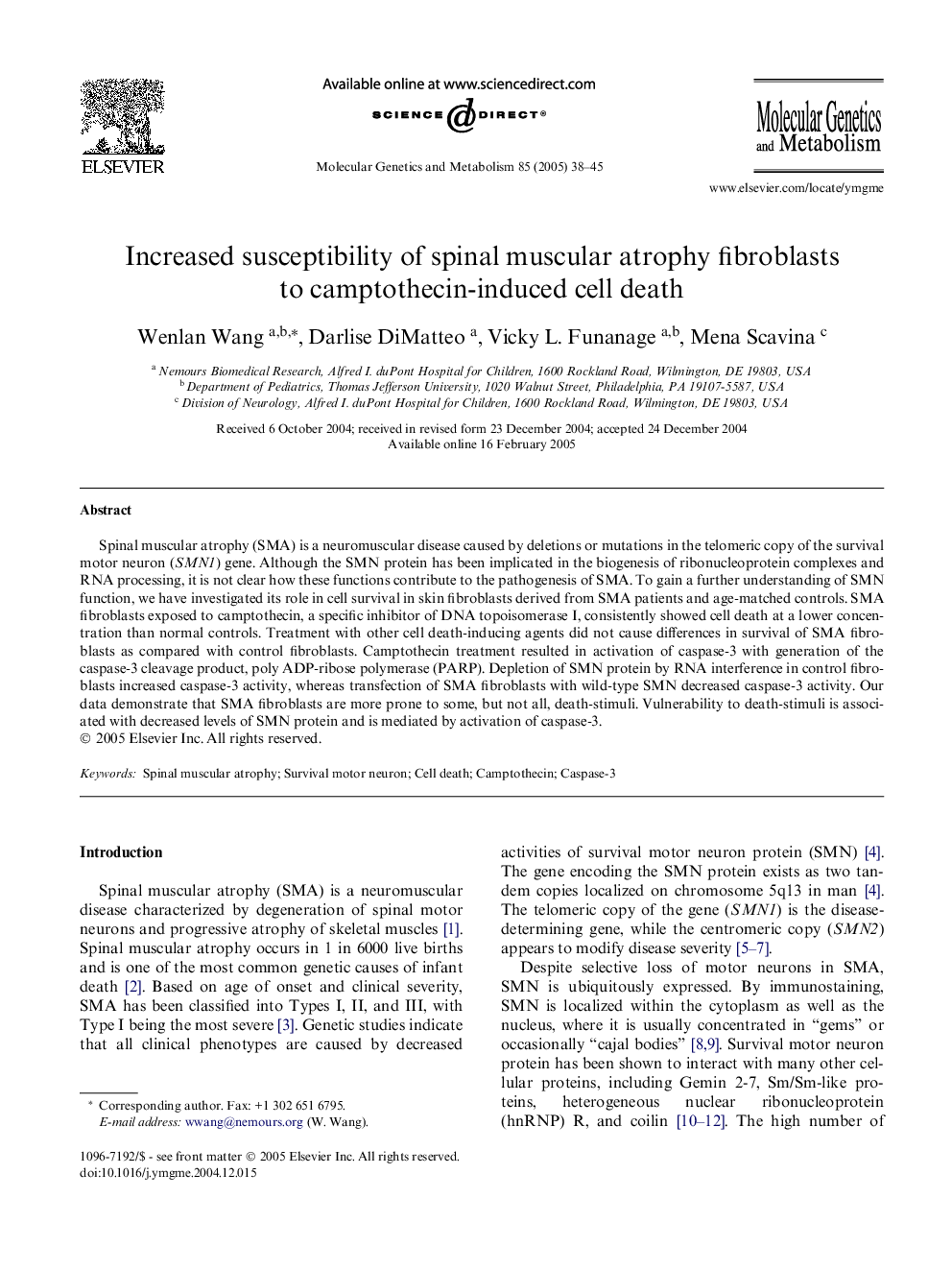| Article ID | Journal | Published Year | Pages | File Type |
|---|---|---|---|---|
| 10834409 | Molecular Genetics and Metabolism | 2005 | 8 Pages |
Abstract
Spinal muscular atrophy (SMA) is a neuromuscular disease caused by deletions or mutations in the telomeric copy of the survival motor neuron (SMN1) gene. Although the SMN protein has been implicated in the biogenesis of ribonucleoprotein complexes and RNA processing, it is not clear how these functions contribute to the pathogenesis of SMA. To gain a further understanding of SMN function, we have investigated its role in cell survival in skin fibroblasts derived from SMA patients and age-matched controls. SMA fibroblasts exposed to camptothecin, a specific inhibitor of DNA topoisomerase I, consistently showed cell death at a lower concentration than normal controls. Treatment with other cell death-inducing agents did not cause differences in survival of SMA fibroblasts as compared with control fibroblasts. Camptothecin treatment resulted in activation of caspase-3 with generation of the caspase-3 cleavage product, poly ADP-ribose polymerase (PARP). Depletion of SMN protein by RNA interference in control fibroblasts increased caspase-3 activity, whereas transfection of SMA fibroblasts with wild-type SMN decreased caspase-3 activity. Our data demonstrate that SMA fibroblasts are more prone to some, but not all, death-stimuli. Vulnerability to death-stimuli is associated with decreased levels of SMN protein and is mediated by activation of caspase-3.
Related Topics
Life Sciences
Biochemistry, Genetics and Molecular Biology
Biochemistry
Authors
Wenlan Wang, Darlise DiMatteo, Vicky L. Funanage, Mena Scavina,
